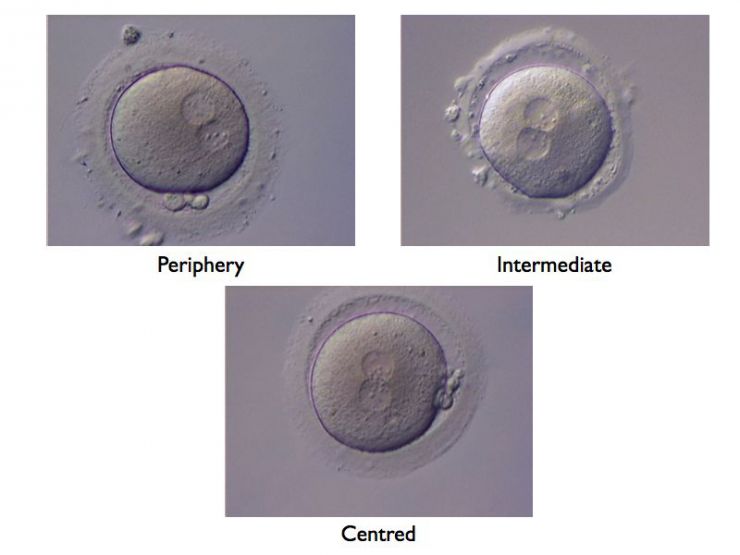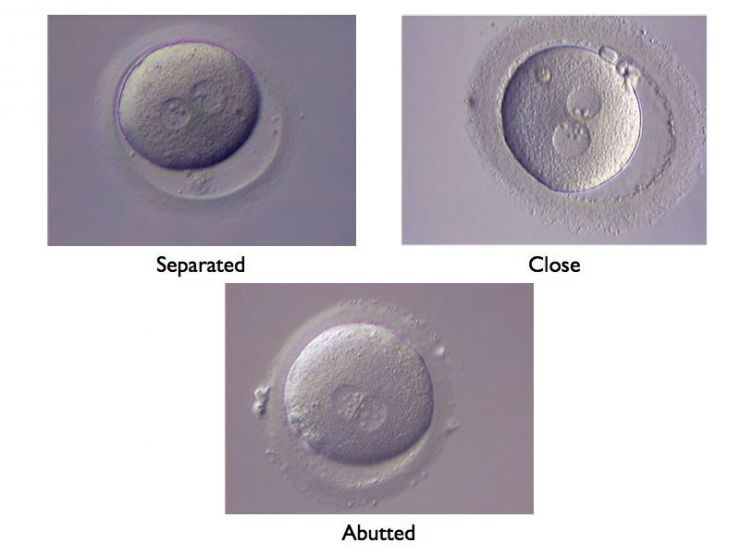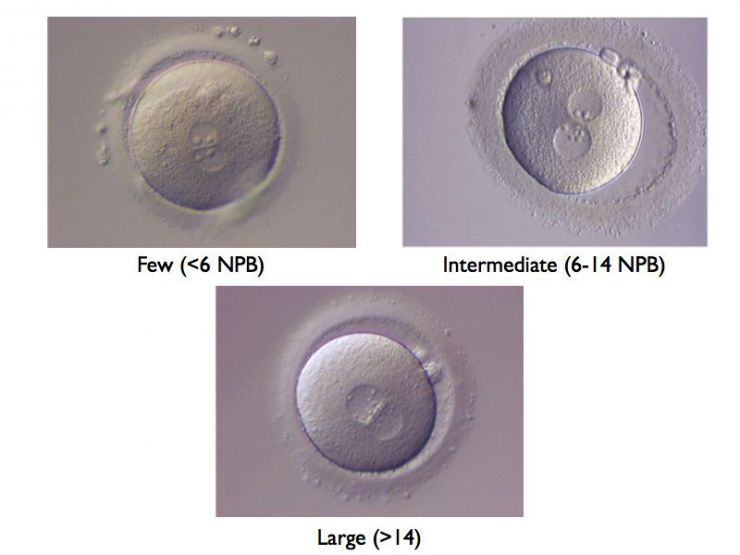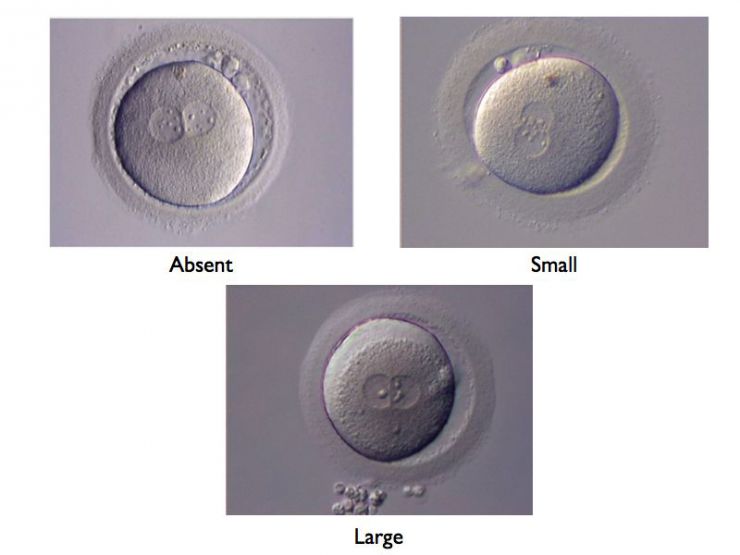The position of the pronuclei (PN) change over time. They appear usually at the periphery where the spermatozoon entered into the oocyte. The aster created by the sperm centriole will bring the female and male pronuclei together and the two will the migrate together towards the center of the oocyte, where the events leading to the first mitotic division will take place.
| Parameters | Morphological aspects |
|---|---|
| Periphery | clearly situated near the ooplasm |
| Intermediate | no more in the periphery, but still not at the center |
| Centered | in the middle of the cell |







